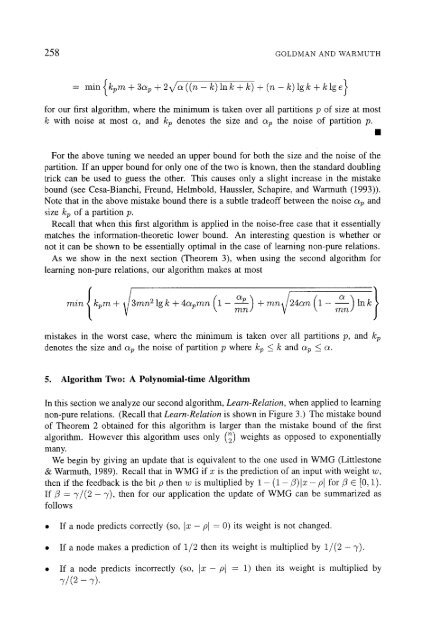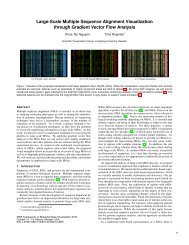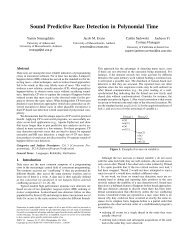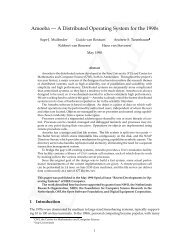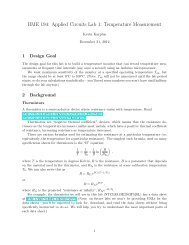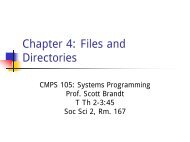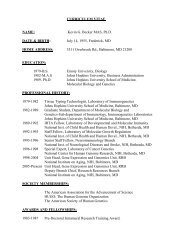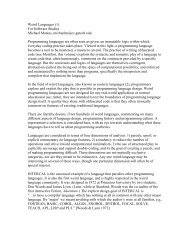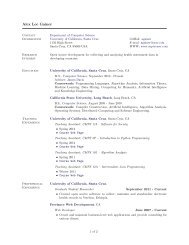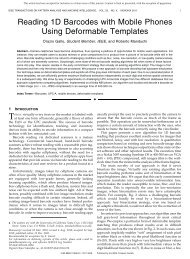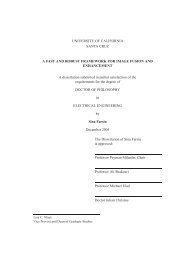Learning binary relations using weighted majority voting
Learning binary relations using weighted majority voting
Learning binary relations using weighted majority voting
Create successful ePaper yourself
Turn your PDF publications into a flip-book with our unique Google optimized e-Paper software.
258 GOLDMAN AND WARMUTH<br />
: min {kprn + 3C~p + 2V/Ct((n - k)lnk + k)+ (n- k)lgk + klge}<br />
for our first algorithm, where the minimum is taken over all partitions p of size at most<br />
with noise at most c~, and kp denotes the size and c~p the noise of partition p.<br />
For the above tuning we needed an upper bound for both the size and the noise of the<br />
partition. If an upper bound for only one of the two is known, then the standard doubling<br />
trick can be used to guess the other. This causes only a slight increase in the mistake<br />
bound (see Cesa-Bianchi, Freund, Helmbold, Haussler, Schapire, and Warmuth (1993)).<br />
Note that in the above mistake bound there is a subtle tradeoff between the noise Ctp and<br />
size kp of a partition p.<br />
Recall that when this first algorithm is applied in the noise-free case that it essentially<br />
matches the information-theoretic lower bound. An interesting question is whether or<br />
not it can be shown to be essentially optimal in the case of learning non-pure <strong>relations</strong>.<br />
As we show in the next section (Theorem 3), when <strong>using</strong> the second algorithm for<br />
[earning non-pure <strong>relations</strong>, our algorithm makes at most<br />
min ~ {hpm + 13mn21gk+4c~pmn (1- -~n) +mni24cm (1- -~n) lnk<br />
mistakes in the worst case, where the minimum is taken over all partitions p, and kp<br />
denotes the size and C~p the noise of partition p where kp < k and C~p _< c~.<br />
5. Algorithm Two: A Polynomial-time Algorithm<br />
In this section we analyze our second algorithm, Learn-Relation, when applied to learning<br />
non-pure <strong>relations</strong>. (Recall that Learn-Relation is shown in Figure 3.) The mistake bound<br />
of Theorem 2 obtained for this algorithm is larger than the mistake bound of the first<br />
algorithm. However this algorithm uses only (~) weights as opposed to exponentially<br />
many.<br />
We begin by giving an update that is equivalent to the one used in WMG (Littlestone<br />
& Warmuth, 1989). Recall that in WMG if x is the prediction of an input with weight w,<br />
then ifthe feedback is the bit p then w is multiplied by 1 - (1 -/3)]x - pl for/3 E [0, 1).<br />
If/3 = 3,/(2 - ~,), then for our application the update of WMG can be summarized as<br />
follows<br />
• If a node predicts correctly (so, ]x - pl = 0) its weight is not changed.<br />
• If a node makes a prediction of 1/2 then its weight is multiplied by 1/(2 - 3,).<br />
• If a node predicts incorrectly (so, ]x - Pt = 1) then its weight is multiplied by<br />
~/(2 - ~).


